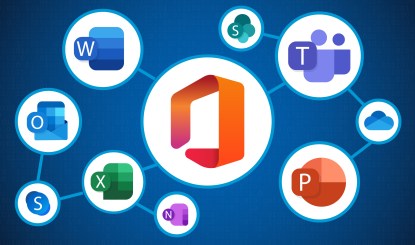Microsoft is ubiquitous in the business world; the vast majority of organizations likely have a Microsoft 365 license they use to allow employees to access tools like Word, Excel, PowerPoint, Outlook, SharePoint, Teams, and Exchange. These are fundamental tools that every business leader can recognize as valuable from the moment the software is installed and launched for the first time, but there’s a lot more to Microsoft 365 than meets the eye.
Organizations that see Microsoft 365 as strictly an opportunity to use the company’s office products are missing out on tools that can provide serious value to your organization’s overall operations. Without having to invest additional resources in new licenses, a Microsoft 365 license can provide organizations with a robust communication platform, cybersecurity tools, and automation system.
So, how do you know if you’re leaving money on the table? That depends on how aware you were of what was in the box when you bought Microsoft 365.
Let’s Start with Teams
Teams is traditionally thought of as a collaboration platform that provides some instant messaging, some calling features, some video meetings, and some breakout workspaces for project-specific needs. However, organizations are often underutilizing the Teams app if they see it solely as a communications tool for their departments.
While Teams does provide a robust communications hub, it can also offer significant automation for your organization’s workflows. Especially when paired with Microsoft’s Power Platform tools, Teams can save the average worker around 4 hours per week, which translates to big savings for organizations in terms of productivity. This time comes from the reduction of time spent switching between email and IM, having fewer meetings, and employing an automation script that makes sense for your individual business (many examples of which are provided by Microsoft). Depending on the size of your organization, fully implementing Teams can mean the difference of adding several employees’ worth of productivity to your organization without the additional payroll.
Security
Many small to medium sized businesses may not know, but if they have a Microsoft 365 Business Premium license, then they have access to a suite a cybersecurity tools that Microsoft had previously reserved for higher subscription tiers. Most modern cybersecurity doesn’t rely solely on a firewall, and what Microsoft has done is create tools that help protect your networks by looking at the very edge of your organization’s systems: its people.
Microsoft 365 has security tools that protect your end user’s login credentials in the form of an Identity and Access Management (IAM) solution via Azure Active Directory. The IAM tool provides substantial protection to organizations because it helps shield the most vulnerable parts of your organization from being compromised. Many cybercriminals recognize that they have to overcome sophisticated firewalls and other protections baked into a company’s technology environment, but if your employee’s login credentials are compromised, then they’ve effectively gained the keys to your kingdom and can access your data without investing as many resources.
Additionally, Microsoft 365 has a lot of tools that enable organizations to properly govern their organization’s data and information. While previous eras saw data stored primarily in servers that were protected by firewalls, much of modern information is housed in cloud systems like SharePoint. Plus, Microsoft provides 365 users with data loss prevention tools that many wouldn’t see in servers set up on an organization’s premises.
Between the data governance tools and the SSO capabilities, organizations that have Microsoft 365 licenses can protect their organization without having to invest massive resources in additional systems.
Power Platform
Aside from Teams and Security, one of the most underutilized aspects of Microsoft 365 is its ability to integrate with Power Platform.
Power Platform is a tool that Microsoft developed to help organizations streamline their workflows. It leverages your organization’s existing data to help minimize the need for repetitive tasks (freeing them up for higher impact work in the process). As noted previously, Power Platform can be integrated into Teams, making an already robust platform a lot more effective at cutting down time your organization spends on tasks that aren’t driving the business forward.
One thing to note is that Power Platform can be implemented with a Microsoft 365 license, but additional licenses would be needed for the employees who are actually designing the workflows in the first place. While this is an additional cost, it is far less expensive than investing in additional tools whose functionality overlaps with those provided in Microsoft 365.
Conclusion
Microsoft 365 licenses are common in the business world, but they’re often misunderstood by the organizations that make the investment. In the majority of cases, business invest in Microsoft for a fraction of its functionality and that means they’ll waste resources investing in more tools with redundant functionality.
Every case is different, so there’s no one way to use Microsoft 365’s tools, but in almost every case companies are leaving significant value on the table by failing to integrate it more deeply into the IT environment.
If you’re looking for help in maximizing the value of your Microsoft 365 investment, visit our Contact Us page to set up a conversation with an expert who can help provide insight into the fully utility of your purchase.

